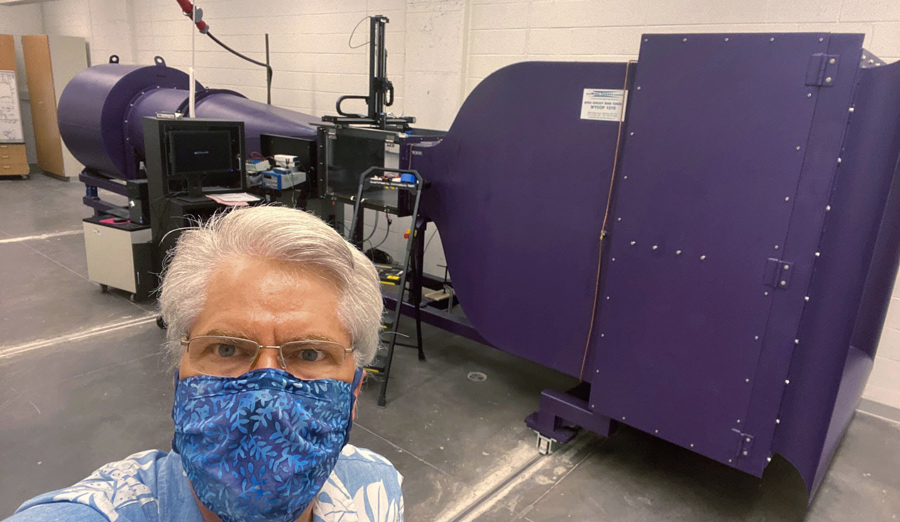The group, composed of Josh Vandervelde ’23, Daniel Curtis ’21, and Professor of Engineering Carr Everbach, studied Swarthmore’s new wind tunnel, a 45-foot-long tube structure in Maxine Frank Singer Hall that allows students to extrapolate how aerodynamic bodies would fare in high-altitude flight.
Funded by a Richard Hurd ’48 engineering grant, their work this past summer lays the groundwork for future student projects, while also furthering the research started by Quentin Millette ’20 on kites that generate energy from powerful, high-altitude winds.

In order for the group to assemble and test their tools at home, administrative coordinator Cassy Burnett mailed soldering equipment and other supplies to Curtis in Macomb, Ill., and Vandervelde in El Cerrito, Calif.
“Even though we were separated, and it wasn’t in ideal conditions, I definitely learned a lot about the processes of team engineering,” says Vandervelde, and about “how many things can go wrong in a project, and just picking yourself up and continuing to go forward.”
Adds Everbach: “Engineering is all about the habits of mind, the meta issues — when something isn’t working, what do you do? How do you proceed? Those were the real important lessons learned.”